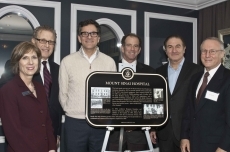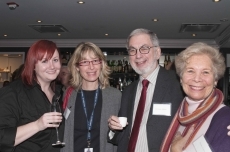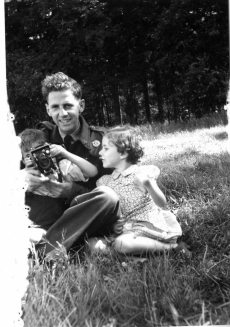Mount Sinai Hospital Plaque Ceremony
On the 17th of November, Mount Sinai Hospital held a reception and ceremony to reveal the historic plaque that Heritage Toronto created to commemorate this important Jewish institution. The OJA was responsible for the selection of sites -- which were reviewed and approved by the HT Board -- as well as the review of the text for the plaque and contribution of photographs.
The event was held at the MoRoCo chocolate shop and restaurant located across the street from the original hospital situated at 100 Yorkville Avenue. The CEO of Mount Sinai along with Dr. Gross, designer Brian Gluckstein and Eric Slavens, the board member of Heritage Toronto who initiated this program, delivered speeches. Special mention was made of the fact that Dr. Harry Arthurs, the former Dean of Osgoode Law School and grandson of the founder of Mount Sinai Hospital, Dorothy Dworkin, was present. Since he is a great friend of the OJA, we made sure to notify him about this event and were extremely pleased that he could come. Eric Slavens also graciously thanked Ellen Scheinberg for her contribution to the plaque and role in the program.
The ceramic plaque is quite beautiful and includes four black and white photographs of the early building, the hospital, Dworkin and her Ezras Noshem Society and a doctor examining a patient during the 1920s. This institution was extremely important to the community, since it fulfilled the crucial function of providing kosher food and services in Yiddish to Jewish patients. Since other hospitals would not hire Jews at that time, it also provided work for Jewish doctors who wanted to remain in Toronto and practice medicine. Everyone was quite pleased with the design and content of the plaque and the Mount Sinai board in particular were thrilled that their hospital was being recognized.
Recently the building was demolished, but the original facade was preserved and is now the entrance for Teatro Verde, a commercial and condo complex located in the heart of Yorkville. Since this is the only remnant left of the original edifice, the plaque will help provide the historical context needed to reveal its rich history and importance to the city of Toronto.







